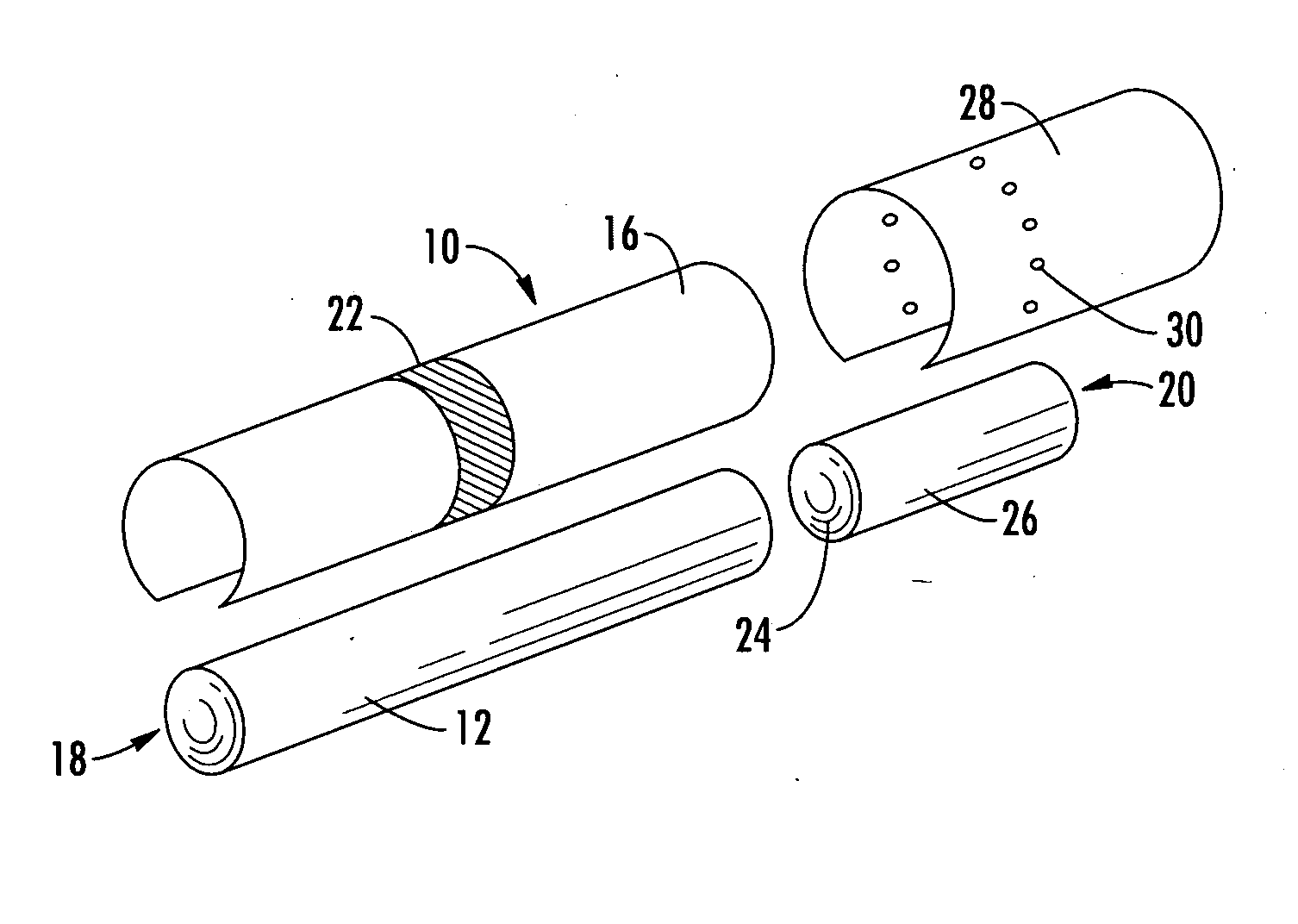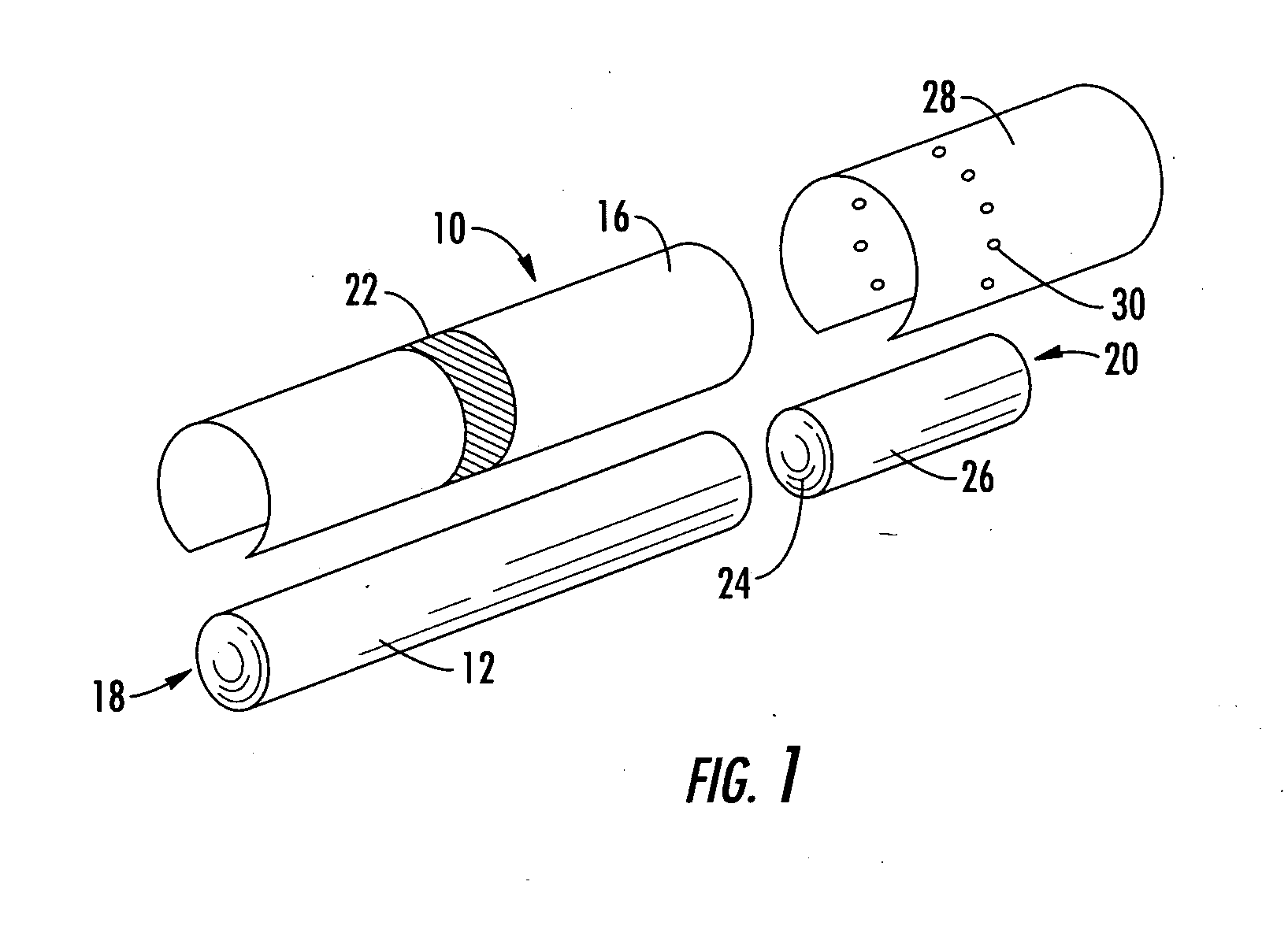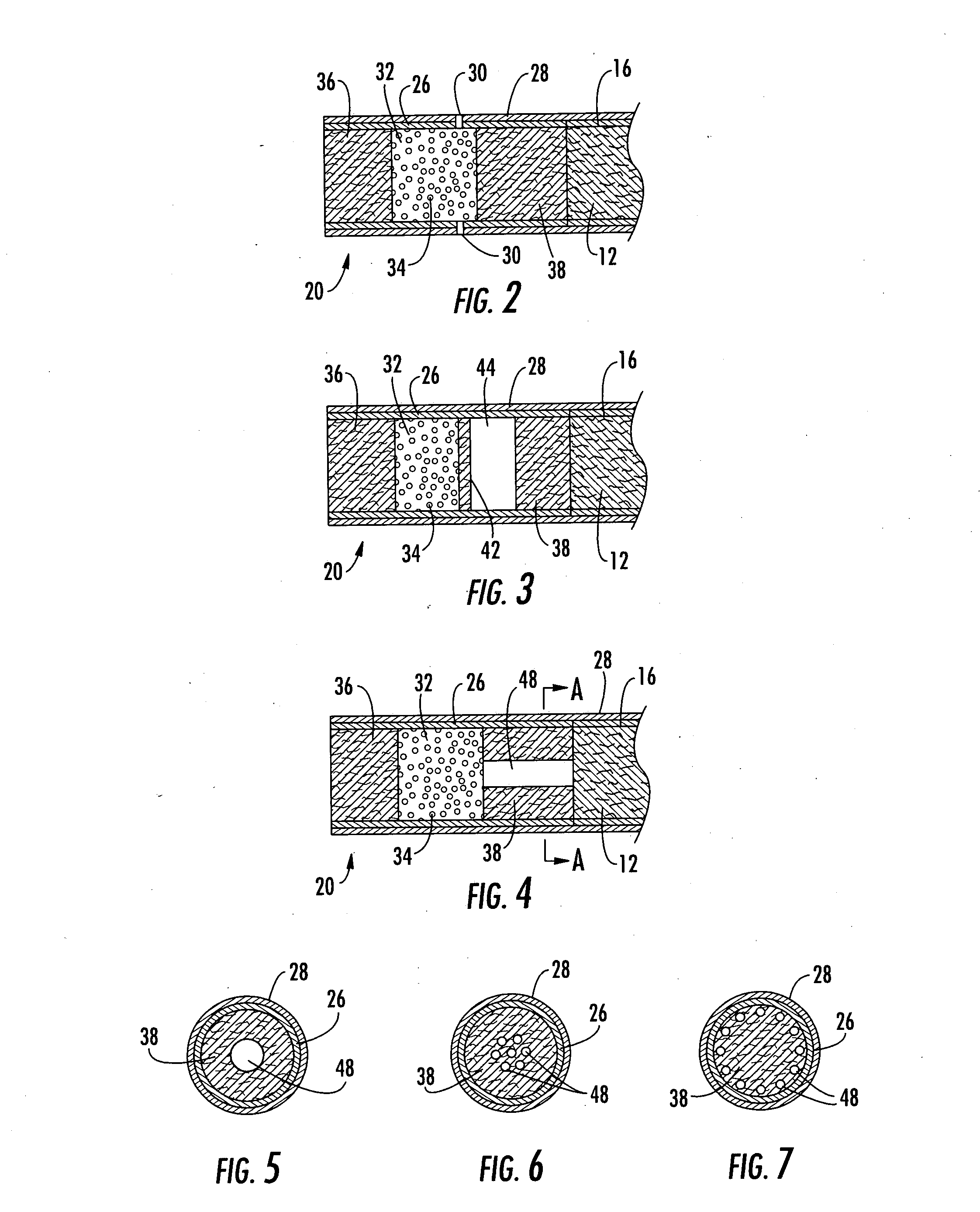Filtered cigarette incorporating an adsorbent material
a filtering and adsorption technology, applied in the field of smoking articles, can solve problems such as changes in the sensory properties of smoke, and achieve the effect of enhancing the intermixing of mainstream smok
- Summary
- Abstract
- Description
- Claims
- Application Information
AI Technical Summary
Benefits of technology
Problems solved by technology
Method used
Image
Examples
example 1
[0087] A cigarette is prepared using a representative American blend comprising about 13 percent burley tobacco, about 20 percent flue-cured tobacco, about 17 percent reconstituted tobacco material, and about 17 percent Oriental tobacco. About 3 percent of an aqueous casing material, comprising humectants and flavors, is applied to the tobacco blend prior to cutting into filler form. About 30 percent expanded, composed of primarily flue-cured tobacco, is then added to the cut tobacco blend to prepare the final cut filler. The blend is equilibrated to final moisture content of about 13 percent prior to cigarette manufacture.
[0088] The tobacco blend is used to prepare a cigarette having a length of about 84 mm. The tobacco rod length is about 57 mm and the filter element length is about 27 mm. The tobacco rod includes a charge of tobacco cut filler weighing about 0.600 g contained in a circumscribing cigarette paper wrap of the type that is available as No. 456 from Tervakoski. The t...
example 2
[0091] Cigarettes are provided as described in Example 1, except the filter element comprises an 8 mm mouth-end end cellulose acetate tow (8.0 / 32,000) segment with 7% triacetin, a 7 mm compartment filled with granular carbon available as G277 (85 carbon tetrachloride activity and size 20×50 mesh) from PICA, and a 12 mm cellulose acetate tow (2.5 / 35,000) tobacco-end segment with 7% triacetin. The cigarettes yield about 10 mg “tar” and 0.8 mg nicotine when smoked under FTC smoking conditions.
[0092] The cigarette of Example 2 made with the filter segment having the higher particulate removal efficiency proximal to the tobacco rod and with the ventilation holes positioned closer to the tobacco rod provides greater reduction in certain volatile and semi-volatile mainstream smoke components as compared to the cigarette of Example 1 when smoked under FTC smoking conditions. The cigarettes of Example 2 provide about 5 percent reduction of catechol, about 28 percent reduction in p-,+m-creso...
example 3
[0093] Cigarettes are provided as described in Example 1. However, a flavor capsule is inserted by hand into the mouth-end plasticized cellulose acetate tow such that the capsule is imbedded in the mouth-end section of filter material. This flavor capsule is obtainable from Mane Aromatic Flavors as Reference E127384 (menthol). The cigarettes can be smoked with or without breaking the capsule.
PUM
 Login to View More
Login to View More Abstract
Description
Claims
Application Information
 Login to View More
Login to View More - R&D
- Intellectual Property
- Life Sciences
- Materials
- Tech Scout
- Unparalleled Data Quality
- Higher Quality Content
- 60% Fewer Hallucinations
Browse by: Latest US Patents, China's latest patents, Technical Efficacy Thesaurus, Application Domain, Technology Topic, Popular Technical Reports.
© 2025 PatSnap. All rights reserved.Legal|Privacy policy|Modern Slavery Act Transparency Statement|Sitemap|About US| Contact US: help@patsnap.com



